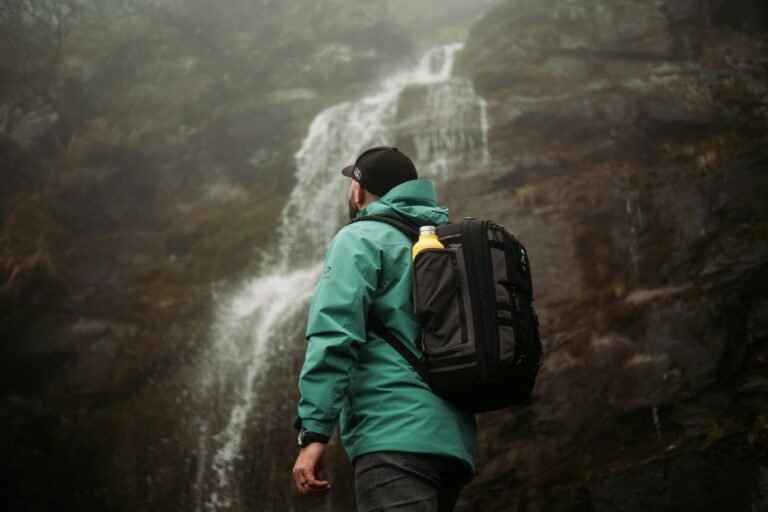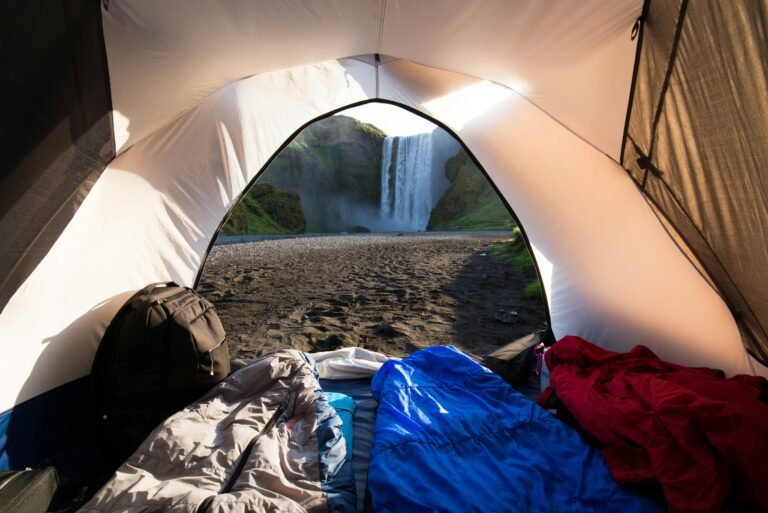How to Plan a Hiking Trip – A Step-by-Step Guide

Dreaming of escaping into nature but not sure how to begin?
Don’t overthink it—hiking is one of the simplest, most fulfilling ways to connect with the outdoors.
With a bit of planning, it’s easier than you might think.
Whether you’re heading to a nearby park or aiming for sweeping mountain vistas, this guide will walk you through the basics.
From picking your first trail to packing light and staying safe, I’ll break it down step by step.
Let’s get started and make your first hiking adventure one to remember.
Why Hiking Is the Perfect Outdoor Adventure for Beginners
Mental Health Benefits of Hiking
Hiking isn’t just exercise—it’s therapy for the mind.
Spending time in nature has been proven to lower stress, sharpen your focus, and boost your mood.
There’s something grounding about the crunch of leaves under your boots, the clean air in your lungs, and the quiet stillness all around you.
It’s a reset button for your mental health, and it works every time.
Physical Fitness for Every Level
Hiking is a flexible way to stay active that benefits both your body and your heart.
Whether it’s a flat trail or a gentle incline, you’ll engage your muscles, improve cardiovascular health, and burn calories.
The beauty of it is that you can go at your own pace—start with easier trails and work your way up as your confidence grows.
Even a quick hike packs a solid workout without feeling like a chore.
Accessibility for Everyone
Hiking keeps it simple—no pricey gear or gym membership needed.
Most trails are free or come with a small fee, making it one of the most affordable ways to stay active.
It’s perfect for beginners or anyone looking for an easy, low-impact way to move their body while reconnecting with nature.
All you need is a pair of sturdy shoes and a sense of curiosity to get started.
Step 1 – Choose the Right Trail for Your First Hike

Look for Beginner-Friendly Trails
If you’re new to hiking, keep it simple.
Start with a trail that’s under 3 miles and has minimal elevation gain.
It’ll be easier on your body and give you a chance to ease into the experience without feeling overwhelmed.
The goal is to enjoy yourself, not push too hard right out of the gate.
Use Trail Apps Like AllTrails
Apps like AllTrails or Hiking Project are great tools for finding the right trail.
They provide all the details you need—trail difficulty, length, elevation, user reviews, and even photos.
Use the filters to search for beginner-friendly trails, and you’ll easily find options that match your level in your area.
Consider Trail Conditions and Proximity
Before heading out, check the weather forecast and choose a trail close to home for your first hike.
This way, you’ll avoid surprises and keep travel time manageable.
Knowing what to expect helps reduce stress, so you can focus on enjoying the experience instead of worrying about the details.
Step 2 – Plan Your Hike with Safety in Mind
Inform Someone of Your Plans
Safety starts with sharing your plan.
Let someone know where you’re hiking, which trail you’re taking, and when you expect to be back.
This simple step ensures that if something goes wrong, there’s someone who knows to raise the alarm.
Understand Trail Etiquette
Respecting others on the trail makes the experience better for everyone.
Yield to hikers coming uphill, keep your noise down, and leave wildlife undisturbed.
A little courtesy goes a long way in creating a peaceful, enjoyable environment for all.
Check for Trail Alerts
Before heading out, check the trail conditions.
Look for any updates about closures, fallen trees, or weather-related hazards.
Many trail websites and park services share these details, so use them to avoid surprises and plan accordingly.
Want more tips on staying safe while hiking? Take a look at Dangers of Hiking: How to Stay Safe on Any Trail.
Step 3 – Gear Up: What You Need for a Successful Hike

Invest in Proper Footwear
A good hike starts with the right footwear.
Invest in hiking boots or trail shoes that provide solid grip and ankle support.
Comfortable, well-fitting shoes can help you avoid blisters and reduce the risk of injuries.
Need guidance on picking the right pair? Check out How to Choose the Best Trekking Boots.
Wear Layered Clothing
Layering your clothing is key to staying comfortable as temperatures change during your hike.
Begin with a moisture-wicking base layer to keep sweat off your skin, add an insulating layer for warmth, and top it off with a lightweight, waterproof jacket to stay dry.
It’s a simple system that keeps you prepared for anything.
Pack the Essentials
Your hiking essentials should include a map, compass, first-aid kit, flashlight, snacks, and plenty of water.
These basics prepare you for common situations, like losing cell service or needing an energy boost on the trail.
For a full checklist, check out The Ultimate Day Hike Packing List.
Step 4 – Master Trail Navigation
Learn to Read Trail Markers
Trail markers, often placed on trees or posts, help guide you along the path.
The colors and symbols typically indicate the trail’s difficulty or direction, so it’s a good idea to get familiar with them before heading out.
Need a refresher? Check out How to Read Trail Markers.
Use Navigation Tools
Apps like Google Maps or Gaia GPS are helpful for navigation, but always bring a backup like a paper map or compass. Technology can fail, and having a physical map on hand could be a lifesaver if your battery dies.
Step 5 – Tips for Staying Comfortable and Safe During the Hike

Pace Yourself
Hiking isn’t about speed—it’s about the journey.
Go at a pace that feels right for you and take breaks whenever you need.
This not only keeps you from overdoing it but also gives you time to enjoy the scenery and fully take in the experience.
Be Prepared for Common Challenges
Blisters and fatigue happen, but they’re easy to handle with a little prep.
Pack blister bandages or moleskin to treat hotspots before they get worse.
High-energy snacks can help fight off fatigue, and staying hydrated is key to keeping your energy up.
Listen to your body and take care of it as you go.
Stay Calm During Wildlife Encounters
Spotting wildlife on the trail is exciting, but it’s crucial to keep your distance.
Never feed animals—it’s harmful to them and can create dangerous situations.
If you’re in bear country, carry bear spray and know how to use it.
If you encounter a bear, stay calm, back away slowly without turning your back, and use bear spray as a last resort.
Respecting their space keeps both you and the wildlife safe.
Step 6 – Hiking Etiquette for Beginners
Follow Leave No Trace Principles
The Leave No Trace philosophy encourages hikers to minimize their impact on the environment.
This means packing out all trash, sticking to marked trails, and respecting wildlife.
Following these principles helps preserve nature for everyone to enjoy.
Be Polite to Other Hikers
A small gesture like a smile or nod can make the trail feel friendlier.
Always yield to hikers coming uphill, and if you’re in a group, walk single file when the trail is narrow to avoid blocking the path for others.
A little courtesy goes a long way. 😊
Stay on the Path
Venturing off-trail might seem tempting, but it can harm delicate ecosystems and increase your chances of getting lost.
Stay on marked trails to keep yourself safe and protect the environment.
It’s a simple way to tread lightly and hike responsibly.
Step 7 – Prepare for More Advanced Adventures

Transitioning to Trekking
Once you’ve gotten comfortable with beginner hikes, you might want to try trekking—multi-day adventures on tougher terrain.
Understanding the difference between hiking and trekking is essential for planning.
Learn more here: Hiking vs. Trekking: Key Differences Every Beginner Should Know.
Upgrade Your Gear
As you move on to longer trails, you’ll need more advanced gear like trekking poles, larger backpacks, or lightweight tents.
Check out Trekking Essentials for Beginners to gear up for your next adventure.
Resources for Beginner Hikers
Best Apps for Hiking
Start with tools like AllTrails, Gaia GPS, or Hiking Project to find trails, track your route, and stay safe on your hikes.
Join a Hiking Community
Look for local hiking groups on platforms like Facebook, Meetup, or by searching hashtags like #HikingForBeginners on Instagram.
Joining a community is a great way to connect with experienced hikers, pick up tips, and stay motivated.
Conclusion
Starting your hiking journey is both exciting and rewarding—it was for me, too.
I still remember my first hike on a short trail near home.
I didn’t have fancy gear or much experience, but taking those first steps opened up a world of adventure and peace I hadn’t known before.
With a little preparation and the right mindset, your first hike can be just as transformative.
So, lace up your boots, pack the basics, and take that first step—you might just find yourself hooked for life.
For more tips and gear guides, check out our related articles.
See you out there on the trails!






